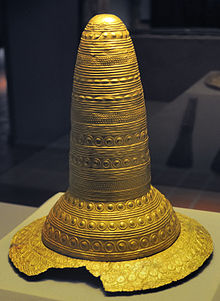
So, here's a story that I can't quite believe - it's simply too, for want of another word, baroque. I've told it before, but the details I've read give it a simultaneously gruesome and tragic flourish.
This is glorious city of Esslingen, near Stuttgart - a magnet for tourists.
This is glorious city of Esslingen, near Stuttgart - a magnet for tourists.

In the mid 17th century, Esslingen was a free imperial city, essentially a microstate, albeit one that was on the decline.
The Thirty Years War had devastated the countryside and famine and disease was not uncommon.
Despite this, it enjoyed a commanding presence in the area.
The Thirty Years War had devastated the countryside and famine and disease was not uncommon.
Despite this, it enjoyed a commanding presence in the area.

In 1651, a 32 year old lawyer married Ursula Margarethe Schlossberger, from one of the patrician families of Esslingen.
While Daniel Hauff came from no humble background, this marriage was advantageous for him.
Here's their home. Her arms are above the door.
While Daniel Hauff came from no humble background, this marriage was advantageous for him.
Here's their home. Her arms are above the door.

Marrying Ursula, from the patrician class that ruled the city, meant that Daniel could work within the town's ruling and judicial structures.
That may be Hauff's sole motivation in marrying her, knowing what we do now.
Hauff quickly climbed the ranks.
That may be Hauff's sole motivation in marrying her, knowing what we do now.
Hauff quickly climbed the ranks.
He was seen as a driven individual, although there were whispers and rumours about him. He seemed to struggle internally, holding something at bay.
Eventually, it could be said, he'd lose that battle.
Eventually, it could be said, he'd lose that battle.
In 1662, over the hills from Esslingen, in the village of Möhringen, a boy called Hans Elsässer was sexually assaulted by an older teenager.
Not knowing how to comprehend it, he claimed to have been subject to witchcraft.
When Hauff heard of this, he had the boy summoned.
Not knowing how to comprehend it, he claimed to have been subject to witchcraft.
When Hauff heard of this, he had the boy summoned.
Under questioning Elsässer gave Hauff the name of the attacker.
Hans was then taken to be imprisoned, awaiting formal trial.
A tragic detail: his parents requested he be executed straight away - they couldn't pay for his imprisonment, as was custom.
Hans was then taken to be imprisoned, awaiting formal trial.
A tragic detail: his parents requested he be executed straight away - they couldn't pay for his imprisonment, as was custom.
From Han's attacker, Hauff gained a list of other figures from around Mohringen and Vaihingen.
Most were men - somewhat of an outlier in German 'witch' persecutions.
Each was brought to Esslingen and subjected to tortures, in accordance with the law of the Holy Roman Empire.
Most were men - somewhat of an outlier in German 'witch' persecutions.
Each was brought to Esslingen and subjected to tortures, in accordance with the law of the Holy Roman Empire.
Now, Hauff was required to be there for the questioning of those accused of witchcraft, but even so, it's said that he took an unusual interest, even pleasure, in the administration of pain.
Once a confession was obtained, each suspect would be hanged outside the city walls.
Once a confession was obtained, each suspect would be hanged outside the city walls.
Now, up until this point, the story is grisly enough.
We have a figure taking an unusual interest in prosecuting male 'witches', taking one horrible incidence of sexual assault to begin a series of prosecutions that literally put the fear of the devil into the region.
We have a figure taking an unusual interest in prosecuting male 'witches', taking one horrible incidence of sexual assault to begin a series of prosecutions that literally put the fear of the devil into the region.
Now this is where it gets darker.
The trail of the accused moved from the village of Möhringen and Vaihingen towards Esslingen.
Soon, those within the city walls were being prosecuted, and the station in life of those accused higher and higher.
The trail of the accused moved from the village of Möhringen and Vaihingen towards Esslingen.
Soon, those within the city walls were being prosecuted, and the station in life of those accused higher and higher.
For all the world, it looked like Hauff was systematically removing any serious opposition to himself, to ascend to the city council.
Gradually members of the patrician fell under Hauff's gaze - and that's when he was suddenly, painfully, forced to retreat to his bed.
Gradually members of the patrician fell under Hauff's gaze - and that's when he was suddenly, painfully, forced to retreat to his bed.
Oddly, the council then met to remove him from his position - the poor man was quite ill - and elected another city advocate.
Hauff couldn't much argue - he was dead of his sudden, painful illness days later.
Hauff couldn't much argue - he was dead of his sudden, painful illness days later.
Now, rumours suggest that he was poisoned. I'd err on the side of believing those rumours.
Those same rumours either identify Ursula, Hauff's wife as the culprit - he was, by accounts, not an attentive husband - or the city council.
Some variations suggest both in tandem.
Those same rumours either identify Ursula, Hauff's wife as the culprit - he was, by accounts, not an attentive husband - or the city council.
Some variations suggest both in tandem.
In a rather horrid postscript, the city council couldn't go quashing Haudf's final convictions. Procedures were a German favourite, even back then.
The local authorities in. Tubingen wouldn't allow the executions, so Esslingen appealed to courts in Strasbourg, which did.
The local authorities in. Tubingen wouldn't allow the executions, so Esslingen appealed to courts in Strasbourg, which did.
23 men and 14 women were sentenced to death by Daniel Hauff.
It's not the biggest witch persecution in the area. Nor does it stand out in terms of the fear it generated among the public.
What gets to me is the banality of it.
It's not the biggest witch persecution in the area. Nor does it stand out in terms of the fear it generated among the public.
What gets to me is the banality of it.
Hauff was given the tools by which to indulge his desires - and his drive for power - by local and imperial authority.
Hauff's persecutions didn't draw much ire from the populace until he threatened those same authorities.
His crime was overreaching, it could be said.
Hauff's persecutions didn't draw much ire from the populace until he threatened those same authorities.
His crime was overreaching, it could be said.
Abuse of power? Blind acceptance of authority? Sociopaths thriving within the ruling structures of society?
No parallels we could draw in the present, surely? /FIN
No parallels we could draw in the present, surely? /FIN
• • •
Missing some Tweet in this thread? You can try to
force a refresh



























